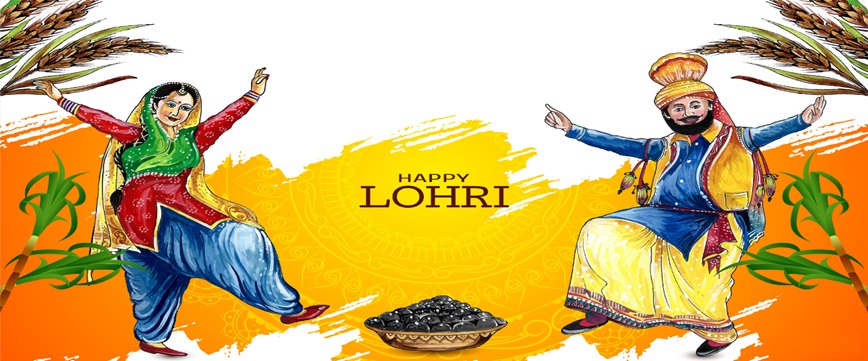
Lohri is a joyous Punjabi festival that marks the end of the winter solstice and the beginning of longer days. It is celebrated on January 13th of every year with great enthusiasm, particularly in the northern Indian states of Punjab, Haryana, Himachal Pradesh, and Jammu and Kashmir. Lohri is a time for bonfires, folk songs, and delicious treats.
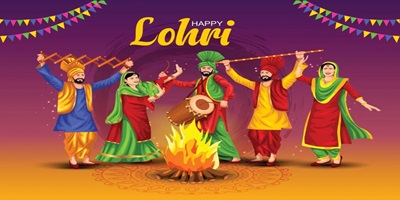
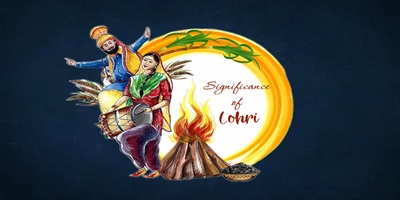
Lohri coincides with the winter solstice a significant astronomical event marking the shortest day and longest night of the year. The festival symbolizes the victory of light over darkness.
As an agricultural community, Punjabis celebrate Lohri by thanking the harvest gods for a bountiful crop. Lohri is also seen as a way to welcome the new solar year and bid farewell to the old.
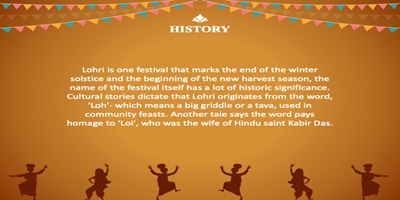
In the history of Lohri, there have been numerous origins. Lohri's theme is the belief that it is the enlightenment celebration of the Winter Solstice. One of the characteristics of Lohri is the bonfire. It signifies the return of longer days by lighting the fire at winter solstice festivals throughout history.
Loi
The name Lohri comes from the word Loi. Loi was the wife of Saint Kabir.
Loh
Some believe that the name Lohri is derived from the word Loh.
Loh refers to the warmth and light of a fire.
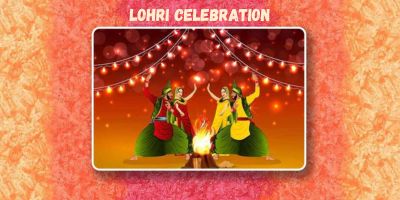
Lohri is the vibrant harvest festival of Punjab, a time of joy, music, and bonfires. Let's capture the essence of this festive occasion through images:
The Bonfire: The heart of Lohri celebrations is a crackling bonfire that symbolizes the warmth of togetherness and the burning of winter's chill.
Festive Feast: Lohri is incomplete without the traditional delicacies of Rewari, Gajak, popcorn, and peanuts. These sweet treats add to the festive cheer.
Colourful Attire: People wear vibrant traditional attire, adding to the festive spirit.
Folk Dances: The rhythmic beats of Bhangra and Gidda fill the air, with people dancing, celebrating the harvest and the warmth of togetherness.
Festive Decorations: Homes and streets are adorned with colourful decorations that create a festive ambience.
Rural Charm: In villages, Lohri is celebrated with a unique charm, with bonfires lit on every street and people coming together to share the joy.
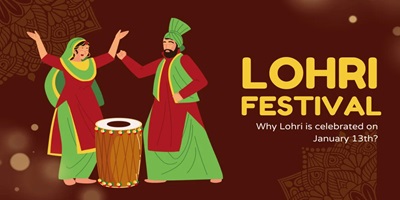
Lohri is a vibrant harvest festival celebrated primarily in northern India, especially in Punjab, Haryana, and Himachal Pradesh. It marks the end of winter and the onset of longer days, coinciding with the winter solstice. Traditionally observed on January 13th, Lohri has cultural, agricultural, and religious significance.
Harvest Festival: Primarily, Lohri marks the end of the winter solstice and the harvesting of rabi crops (winter crops like wheat). It's a time to celebrate the bounty of the harvest and thank nature for its generosity.
Farewell to Winter: Lohri signifies the end of winter solstice and the promise of longer, warmer days. The bonfires lit during the festival are believed to ward off the chill of winter and welcome the warmth of spring.
New Beginnings: Lohri is considered an auspicious occasion for new beginnings. It marks a fresh start, symbolizing hope, prosperity, and the renewal of life.
Cultural Significance: Lohri holds deep cultural significance, particularly for the Sikh and Hindu communities in Punjab and surrounding regions. It's a time to strengthen community bonds, celebrate traditions, and pass on cultural heritage to younger generations.
Folklore and Legends: Lohri is associated with various folklore and legends, such as the story of Dulla Bhatti, a folk hero who rescued Punjabi girls from forced marriages. These stories add a layer of mythical and historical significance to the festival.
In essence, Lohri is a celebration of life, harvest, culture, and the hope of a brighter future. It's a time to come together, rejoice, and embrace the warmth of community and the bounty of nature.
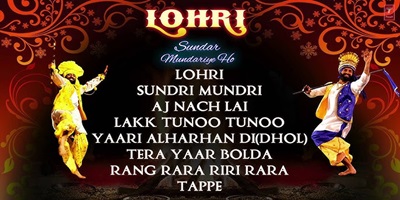
Lohri is Punjab's vibrant harvest festival, a celebration of togetherness, gratitude, and joy. Traditional Lohri songs hold a special place in this festival, as they bring communities together around the warmth of the bonfire.
Sundar Mundariye: This popular song praises the beauty of young girls and wishes them a prosperous life.
Lohri, Lohri, Ayee Eh: This traditional song is sung around the bonfire, with people clapping and dancing to its cheerful rhythm.
Vella Lohri Da: This song is a playful taunt sung by young men to tease young women, adding a touch of lightheartedness to the festivities.
Dheeyan Di Lohri: This song celebrates the birth of a girl child and wishes her a happy and prosperous life.
Lohri songs typically revolve around the following themes:
Harvest: The songs express gratitude for the harvest and the abundance of food.
Winter: The songs celebrate the warmth of winter and the joy of being together around the bonfire.
Love and Marriage: Many songs are dedicated to love and marriage, with wishes for a happy and prosperous life for young couples.
Family and Friendship: The songs emphasize the importance of family and friendship and the joy of celebrating together.
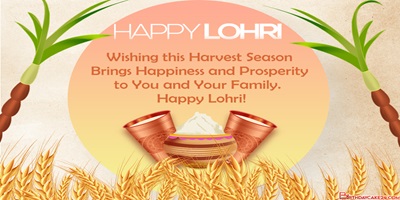
Lohri is a festival of joy, warmth, and togetherness, celebrated with vibrant energy and traditional fervor. It marks the end of winter and the beginning of a harvest season, bringing people together around the bonfire to offer gratitude and share happiness.
Here are some heartfelt Lohri wishes to make the celebration even more special:
May the warmth of the Lohri bonfire fill your heart with joy, happiness, and prosperity. Happy Lohri!
On this festive occasion, may your life be as sweet as the rewari and gur. Wishing you and your family a very Happy Lohri!
May this Lohri bring endless opportunities, good health, and success in your life. Celebrate with love and laughter. Happy Lohri!
To my dearest family, may this Lohri bring us closer and fill our hearts with peace and love. Happy Lohri!
Let the Lohri fire bring light and positivity to your life. Wishing you happiness always!
We celebrate many festivals throughout the year in different styles. Every festival is unique, read about the most popular festivals of India like Pongal History, Wishes, Images, Messages, Wallpaper, Food & Mahashivratri Wishes, Vrat, Pooja Vidhi, Date, Timing.